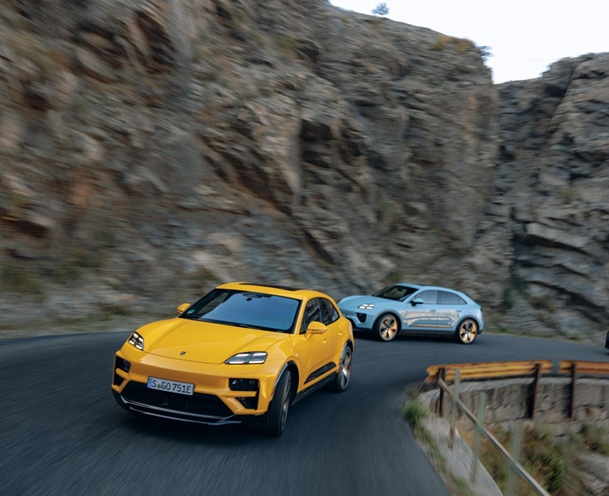Porsche reported a notable rise in the proportion of electrified vehicles sold globally during the first six months of 2025. From January to June, the company delivered 146,391 vehicles worldwide, with electrified models accounting for 36.1% of that total—a significant increase of 14.5 percentage points compared to the previous year. This figure includes 23.5% fully electric vehicles and 12.6% plug-in hybrids.
Among Porsche’s six model lines, the Macan showed the most significant growth, with a 15% increase in deliveries. The Panamera also posted a solid performance, up 13% from the same period last year.
North America maintained its position as Porsche’s largest market, with 43,577 vehicles delivered—a 10% year-over-year increase and the highest first-half sales figure ever recorded for the region. The Overseas and Emerging Markets followed closely, also hitting a new milestone with 30,158 vehicles delivered, marking a 10% rise.
“The fully electric Macan is playing a key role in driving our electrification strategy,” said Matthias Becker, Porsche AG Board Member for Sales and Marketing. “Despite ongoing geopolitical uncertainties, we’ve managed to maintain a stable and well-distributed global sales performance. Our customers continue to value highly individualised vehicles, and we plan to expand our offerings accordingly.”
Regional Market Overview
North America led Porsche’s regional performance, benefiting from improved product availability and price protection initiatives in response to higher import tariffs. The Overseas and Emerging Markets also posted strong results, reaching a new all-time high in deliveries.
In contrast, Europe (excluding Germany) saw a decline, with 35,381 vehicles delivered—down 8% compared to the previous year. In Germany, 15,973 vehicles were delivered, representing a 23% drop. Both declines are partly attributed to an unusually strong performance in the previous year, which had been driven by pent-up demand from 2023.
China, meanwhile, recorded 21,302 deliveries—a 28% decline year-over-year. The downturn reflects continued challenges in the luxury vehicle segment and heightened competition in the Chinese market. Porsche is focusing on value-driven sales strategies to align supply with demand in the region.
Overall, global deliveries during the first half of 2025 were 6% below the previous year’s total, though sales remained evenly distributed across the company’s key markets.
Macan Leads as Top-Selling Model
The Macan was Porsche’s top-performing model, with 45,137 units delivered—up 15% from the previous year. Nearly 60% of these sales (25,884 vehicles) were for the fully electric version. The combustion-engine variant, still offered in many non-EU markets, accounted for 19,253 deliveries.
The Panamera followed with 14,975 vehicles sold—a 13% increase. Meanwhile, 25,608 units of the iconic 911 were delivered, though this marked a 9% decline attributed to strong final sales of the previous generation and the phased rollout of the new model.
The 718 Boxster and 718 Cayman lines saw 10,496 deliveries, down 12%, mainly due to limited model availability resulting from EU cybersecurity compliance requirements. Production of the current 718 series is scheduled to end in Q4 2025.
Porsche delivered 8,302 units of the Taycan in the first half, representing a 6% decrease, while Cayenne deliveries totaled 41,873—a 23% drop—partly due to comparison with last year’s catch-up sales.
Outlook for the Second Half
Looking ahead, Becker noted that Porsche anticipates continued headwinds in the global market: “We expect the external environment to remain complex. That’s why aligning supply and demand through close coordination with our regional teams is crucial. Our strategy remains focused on value over volume, supported by an almost completely renewed product portfolio that meets a wide range of customer preferences in both drivetrain and features.”














